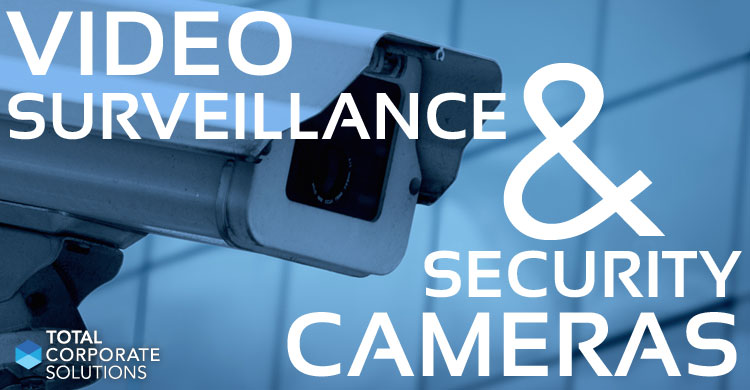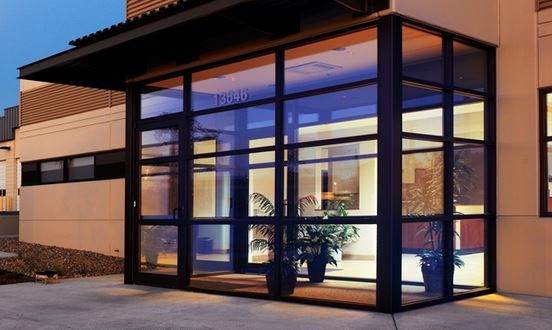
The importance of video surveillance in the corporate world can sometimes be overlooked, especially when companies are just getting started, or are in the process of transitioning to a larger operation. While rights to privacy can be a much disputed issue, expectations within the workplace do acknowledge that it is in an owner’s best interest to protect their investment and livelihood. This is similar to when private homeowners set up video surveillance and cameras that not only monitor the immediate property, but also public roadways that lead to the structure.
For some heads of company, and even heads of household, it can be difficult to broach this subject with others, however, there are also two very important points to consider. Within a private residence, the owner does have the right to take safety measures for protection, so long as these measures do not impinge upon another’s individual privacy. For this reason, visual surveillance of public spaces is considered legally acceptable, so long as the cameras do not look into the actual home of another person.
The second point to remember is that business owners have the right to invest in surveillance for their company and office, so long as employees are aware that CCTVs are in operation. Obvious incursions on actual privacy would include restrooms, but the rest of the office space is regarded as public access for staff.
The difficulty in broaching the disclosure aspect with employees can come from a fear that trust will be strained, although presenting the concept of security cameras and surveillance in an objective manner can also improve this transition. By posing the goal for security as one of protecting the company and the employees, any resistance to surveillance efforts in the workplace can generally be overcome. The concept of safety can be further reinforced through the actual placement of security cameras.
Looking at Trouble Spots
Another concern that business owners can have is how much to invest in video surveillance and security cameras. One unfortunate tendency is that entry and exit ways may be covered, but this also leaves blind spots that can obscure approach to the office and activities that may be happening within. This also leaves places where employees could run into dangerous situations, especially if they are accessing their vehicle late at night. For this reason, even initial investments in cameras and video surveillance should be moderate at least, since with proper positioning, even as few as eight cameras can cover a small office space and the parking lot.
This also means that before settling on a full camera setup, it can be helpful to do a walkthrough of the space with a professional surveillance supplier, since this can also uncover areas that could use a video system, especially if they are not extensively traveled. The result is that the best camera coverage can be obtained with minimal expenditure.

As Far as the Camera Can See
Modern video surveillance equipment has seen vast technological improvements, to the point where even mid to low grade cameras can provide high resolution stills. However, some systems will still utilize the frame by frame approach in order to save on recording space. What this means is that the surveillance video is actually a series of pictures that may be snapped around three to five seconds apart, and this can reduce the valid information that is available when it is needed.
Although the recording capacity of video surveillance hardware and the function of specific cameras can be linked, a number of mid to high quality security cameras are also scalable, based on the video hardware they are used with. This means that business owners can focus on the qualities they are looking for in an actual security camera, while also trusting that appropriate hardware and software for operation will further unlock the surveillance capacity.
In regards to cameras themselves, some points to consider include:
- Size and weight, especially in regards to how they are mounted
- Static positioning or sweeping views
- Grades of still and video resolution
- Zoom capabilities
- Audio and visual or visual only
- Indoor and outdoor compatibility
- The need for night vision or low light modes
- Internal or external power source
- RF, wifi, or hardwired configurations for cameras within the CCTV
While overall pricing and the amount of security cameras that are needed can also be good factors to consider, it is always best to go with the product that will provide the most usefulness, and not just the most savings.
Bringing the Picture into Focus
Another necessary factor to look into when investing in video surveillance is how footage will be recorded, stored, and viewed. The use of digital playback hardware also gives owners further options for how they can best monitor the office, and ensures better safety for all employees. Much of the actual hardware for this type of security is fairly standard in design, but software upgrades can continue to improve functionality, even over time. However, hardware can have some physical constraints that should also be evaluated.
- Memory and storage capacity, especially if there is the capacity to back up recordings through external hard drives
- How long images can be set to store, and whether they will be automatically recorded over
- Port capacity, which is necessary for expanding video surveillance systems
- Camera access, which can include remote or wired units to the hardware, but also includes the maximum number of cameras that can be synced to the hardware
- Network compatibility, which can be particularly necessary if owners also want to establish remote access through personal and digital devices
Although the process of setting up video surveillance and security cameras in the office can seem like a large task, the proper choice of equipment can also mean that changes are enables at a later point in time. This scalability should apply to the capacities of the hardware itself, but should also consider software and programming patches that can improve function and versatility of the system.
